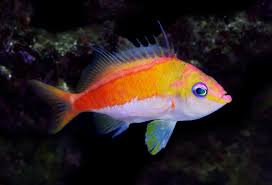Dragons as Symbols of Courage and Patience: A Mythological Exploration

Dragons, magnificent and powerful creatures, have always held a prominent place in mythologies and cultural symbolism across the world. In many traditions, dragons are not simply fearsome beasts; they are embodiments of qualities such as courage, patience, and strength. While dragons are often depicted as powerful, fierce, and sometimes destructive, their role in various mythologies also reveals a deeper connection to virtues that transcend mere physical might. Courage and patience, two fundamental traits in the journey of both heroes and mythological creatures, are frequently attributed to dragons. This article explores the symbolic role of dragons as representations of courage and patience in mythology, literature, and cultural traditions.
1. The Dragon as a Symbol of Courage
One of the most prominent associations of dragons in mythological traditions is their embodiment of courage, particularly in the context of the hero’s journey. In many ancient tales, dragons appear as formidable foes that require immense bravery to confront. However, dragons are not always viewed as mere obstacles; they often serve as a test of a hero’s strength, perseverance, and valor. Overcoming these creatures is not just a physical act but also a demonstration of the internal fortitude necessary to achieve greatness.
The Heroic Quest in Western Mythology
In Western mythology, dragons are often depicted as dangerous creatures guarding treasures or sacred places. The heroes who confront these dragons are seen as exemplars of courage, willing to risk their lives for noble causes. One of the most well-known tales is the story of Saint George and the Dragon. Saint George, a knight of great renown, confronts a dragon that terrorizes a town and demands the sacrifice of a princess. Through sheer courage, Saint George slays the dragon, symbolizing the triumph of good over evil. This myth has been interpreted as a representation of bravery in the face of overwhelming odds, with the dragon symbolizing the fears and dangers that must be overcome by those who strive to protect the innocent and uphold justice.
In addition to Saint George, other Western dragon-slaying myths, such as the legends of Sigurd from Norse mythology or Perseus from Greek mythology, depict heroes who, through courage and determination, conquer dragons. These stories emphasize that the dragon, as a force of chaos or malevolence, can only be overcome through steadfast bravery. The act of slaying a dragon becomes symbolic of the triumph of human will over fear and adversity.
Eastern Dragons and Courage in Asian Cultures
In Eastern cultures, dragons are not always enemies to be defeated but are often viewed as protectors or rulers of the natural world. However, even in these cultures, dragons are still associated with courage, particularly in relation to the balance of nature and the protection of harmony.
In Chinese mythology, the dragon is often seen as a symbol of imperial power, representing strength, bravery, and leadership. The emperor, as the “Son of Heaven,” is often associated with the dragon, and his bravery in defending the kingdom is central to the stability of the empire. Chinese legends also feature dragons as forces of nature, such as the Eastern Dragon (Qinglong), who represents the strength and courage needed to protect the land from floods and droughts. These dragons embody the courage required to maintain order in the natural world and ensure the well-being of the people.
Similarly, in Japanese mythology, the dragon, particularly Ryujin, the dragon king of the seas, is often associated with the bravery of those who seek his aid or guidance. Ryujin is a protector of the oceans, and sailors who journey into the deep seas must demonstrate courage in the face of unpredictable and dangerous waters. The dragon’s role in these stories is not just as a powerful entity but as a symbol of the bravery required to face the vast and mysterious forces of nature.
2. The Dragon as a Symbol of Patience
While dragons are often seen as symbols of courage, their association with patience is equally significant. Dragons are frequently depicted as ancient, wise creatures who have lived for centuries, if not millennia, and have witnessed the rise and fall of empires, civilizations, and heroes. This long life span and vast knowledge often position dragons as symbols of patience, a virtue that allows them to endure through the ages and offer wisdom to those worthy of their guidance.
The Serpent of Time in Western Mythology
In Western cultures, dragons are sometimes portrayed as ageless creatures who have lived for centuries, collecting treasures and knowledge along the way. This depiction ties the dragon to the idea of patience, as it must wait for the right moment to act. One famous example of this is the dragon Fafnir in Norse mythology. Fafnir, once a dwarf, transformed into a dragon due to his insatiable greed for treasure. However, his transformation also symbolized the passage of time and the slow, relentless nature of his waiting. Fafnir’s hoard of treasure, guarded patiently for years, becomes a symbol of the slow accumulation of wisdom and experience, which can be as dangerous as it is valuable.
In these stories, the dragon’s patience is not merely about waiting idly but about watching and observing, gathering knowledge and power over time. The dragon is a patient figure who endures through the ages, often emerging at pivotal moments in a hero’s journey or in the course of human history. This patience contrasts with the hero’s urgency, making the encounter with the dragon all the more profound.
The Dragon’s Wisdom in Eastern Cultures
In Eastern traditions, the connection between dragons and patience is often tied to their role as guardians of sacred knowledge or wisdom. In Chinese mythology, dragons are seen as wise and patient beings who have the power to control the elements and protect the natural world. The dragon’s patience is exemplified by the way they carefully guard secrets and knowledge, offering their wisdom only to those who prove themselves worthy through perseverance and humility.
For example, in the tale of the Yellow Emperor, a legendary figure in Chinese history, the dragon is often depicted as a guide who leads the emperor through difficult trials. The dragon’s patience in waiting for the right moment to impart knowledge underscores its role as a teacher and a symbol of enduring wisdom. The dragon’s ability to wait for the right moment to act is a quality that heroes and sages alike must embody in their own quests for enlightenment and understanding.
Similarly, in Japanese mythology, dragons like Ryujin embody patience as they control the flow of the ocean and the seasons. These dragons must wait for the natural cycles to unfold, guiding humanity in a subtle yet powerful manner. The dragon’s control over the tides and weather exemplifies its ability to influence the world through calm and steady action, rather than through haste or force.
3. The Dragon in Folklore and Literature
Throughout folklore and literature, dragons continue to serve as symbols of courage and patience, both as formidable adversaries and as wise mentors. These dual aspects of the dragon make it a compelling figure in storytelling, representing the balance between bold action and calm endurance.
In modern fantasy literature, dragons are often depicted as characters who embody both of these virtues. For instance, in J.R.R. Tolkien’s works, particularly in The Hobbit, the dragon Smaug represents both the fearsome courage of a guardian of treasure and the patience of a creature who has waited for centuries to amass wealth. Smaug’s patience in guarding his hoard allows him to remain powerful, but his eventual defeat by the hobbit Bilbo Baggins shows how the dragon’s patience can be both a strength and a vulnerability.
Similarly, in the works of George R.R. Martin, dragons in A Song of Ice and Fire are often symbols of immense power, but they also represent the long-simmering patience required for significant change. Daenerys Targaryen’s dragons, for example, symbolize not only her courage in fighting for her throne but also the patience she must exhibit to reclaim her kingdom and navigate the political landscape of Westeros.
4. The Enduring Legacy of Dragons as Symbols of Courage and Patience
The enduring legacy of dragons as symbols of courage and patience speaks to their deep-rooted connection in the human psyche. Whether as guardians of treasures, teachers of wisdom, or harbingers of change, dragons have come to represent the ideal balance between bold action and the quiet endurance required to overcome challenges. In their presence, we are reminded that true courage is not simply about facing danger head-on, but also about having the strength to wait for the right moment. Similarly, patience is not a passive trait but an active form of endurance, allowing dragons to navigate the complexities of time and space with grace and power.
As symbols of courage and patience, dragons continue to inspire heroes and scholars alike. Through their stories, we learn that it is not just the dragon’s fire that makes it a powerful figure, but its unyielding strength, patience, and wisdom. These mythical creatures teach us that true strength comes from both daring action and the quiet resolve to persevere through life’s challenges, making dragons timeless symbols of two of humanity’s most essential virtues.

